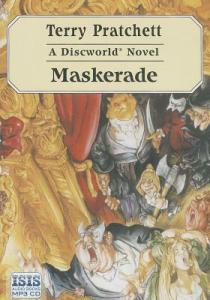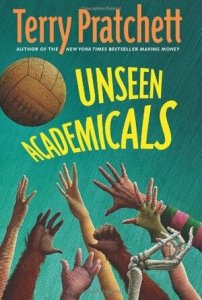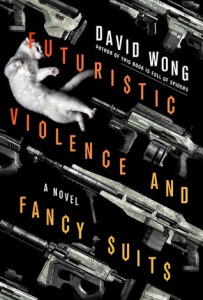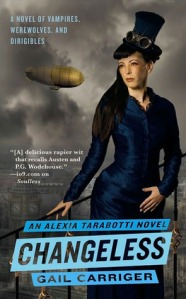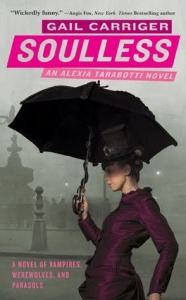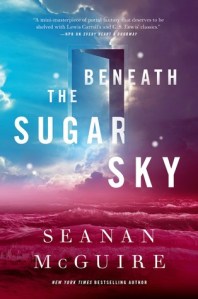Title: Maskerade
Series: Discworld #18, Witches #5
Author: Sir Terry Pratchett
Genre: Low Fantasy
Trigger Warnings: Death, murder, fatphobia, body shaming, ableism, blood (mentions)
Spoiler Warning: This book is 18th in a series, but this book and this review contain only mild spoilers of the last Witches book, Lords and Ladies.
Back Cover:
The Opera House: where innocent young sopranos are lured to their destiny by a strangely familiar evil mastermind. But Granny Weatherwax is in the audience and she doesn’t hold with that sort of thing. So there’s going to be trouble…
Review:
Granny Weatherwax is a pretty neat character idea, but she’s also my biggest frustration with the Witches subseries. She’s mean, passive-aggressive, won’t admit she’s wrong, and determined to make people do what she thinks is best for them regardless of their opinions on the matter. Luckily for my enjoyment of this book, Granny is slowly starting to get a little bit better, and Agnes, the third protagonist along with Granny Weatherwax and Nanny Ogg, is even more fed up with Granny than I am.
Granny Weatherwax and Nanny Ogg have decided that Agnes should become their third witch now that Magret has escaped from under Granny’s thumb. Agnes, though, hates the very idea, and instead takes her spectacular vocal talent to Ankh-Morpork to become an opera singer. Granny and Nanny come up with an excuse to follow her there and interfere. Also the plot of Phantom of the Opera is going on, complete witha mysterious black-suited mask-wearing opera house “ghost,” murders, and a gorgeous lead singer named Christine (although this Christine can’t actually sing).
Agnes is prodigiously fat, and though this doesn’t bother her in the slightest, there is a lot of fatphobia from others and some of the humor is based around fatphobic jokes. Although there is quite a bit of actual humor, as well. It’s definitely not as funny as some of the other Discworld books, but I think it’s the funniest of the Witches books so far.
There’s not really anything here that I would call a main plot. There’s the whole Phantom of the Opera thing, which mainly becomes a whodunit mystery trying to figure out who is the opera house ghost so they can stop him from murdering people, Agnes trying to find where she fits into the world of opera, Granny doing her best to meddle in everything (with Nanny cheerfully along for the ride), and a very bizarre subplot about an Ankh-Morpork-born opera singer pretending to be a foreigner and really hating how everyone goes out of their way to feed him foreign food that he doesn’t like but requesting the Ankh-Morpork food he does like would blow his cover. No, I’m not sure what the point is supposed to be either.
Though I can’t say I’m a particular fan of how things worked out for Agnes in the end, overall this was a solid book. It kept me interesting, it made me laugh, I liked Agnes a lot, and Granny Weatherwax’s more enraging aspects were toned down. It’s not my favorite Discworld book, but it’s definitely not my least favorite, and it may be my favorite of the Witches books so far.
The Discworld series:
- The Colour of Magic
- The Light Fantastic
- Equal Rites
- Mort
- Sourcery
- Wyrd Sisters
- Pyramids
- Guards! Guards!
- Eric
- Moving Pictures
- Reaper Man
- Witches Abroad
- Small Gods
- Lords and Ladies
- Men at Arms
- Soul Music
- Interesting Times
- Maskerade
- Feet of Clay
- Hogfather
- Jingo
- The Last Continent
- Carpe Jugulum
- The Fifth Elephant
- The Truth
- Thief of Time
- The Last Hero
- The Amazing Maurice and His Educated Rodents
- Night Watch
- The Wee Free Men
- Monstrous Regiment
- A Hat Full of Sky
- Going Postal
- Thud!
- Wintersmith
- Making Money
- Unseen Academicals
- I Shall Wear Midnight
- Snuff
- Raising Steam
- The Shepherd’s Crown

